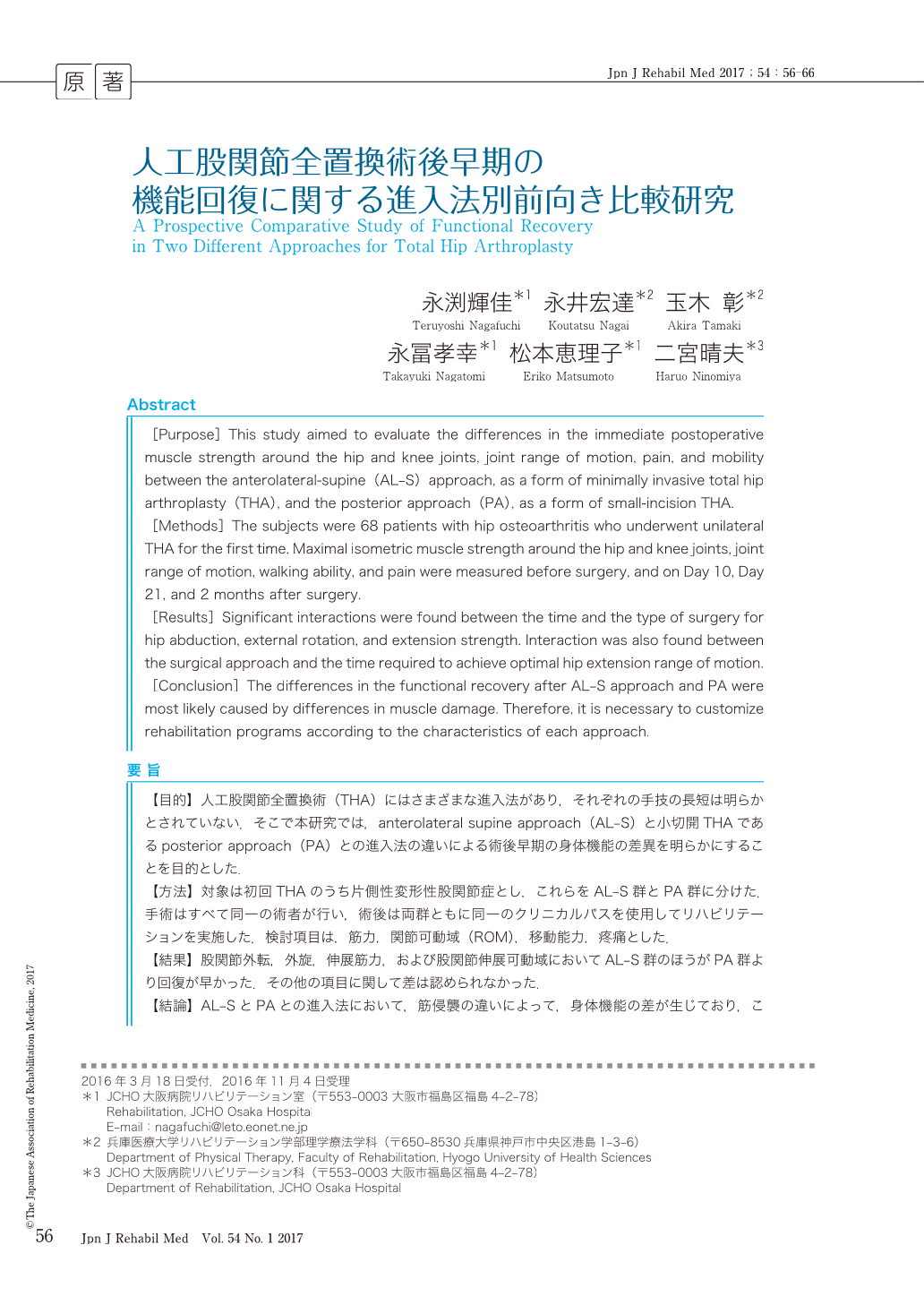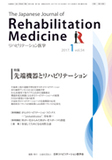Japanese
English
- 販売していません
- Abstract 文献概要
- 1ページ目 Look Inside
- 参考文献 Reference
要旨
【目的】人工股関節全置換術(THA)にはさまざまな進入法があり,それぞれの手技の長短は明らかとされていない.そこで本研究では,anterolateral supine approach(AL-S)と小切開THAであるposterior approach(PA)との進入法の違いによる術後早期の身体機能の差異を明らかにすることを目的とした.
【方法】対象は初回THAのうち片側性変形性股関節症とし,これらをAL-S群とPA群に分けた.手術はすべて同一の術者が行い,術後は両群ともに同一のクリニカルパスを使用してリハビリテーションを実施した.検討項目は,筋力,関節可動域(ROM),移動能力,疼痛とした.
【結果】股関節外転,外旋,伸展筋力,および股関節伸展可動域においてAL-S群のほうがPA群より回復が早かった.その他の項目に関して差は認められなかった.
【結論】AL-SとPAとの進入法において,筋侵襲の違いによって,身体機能の差が生じており,これらを改善させるために進入法の特徴に合わせたリハビリテーションプログラムを確立することが必要である.
Abstract
[Purpose]This study aimed to evaluate the differences in the immediate postoperative muscle strength around the hip and knee joints, joint range of motion, pain, and mobility between the anterolateral-supine (AL-S) approach, as a form of minimally invasive total hip arthroplasty (THA), and the posterior approach (PA), as a form of small-incision THA.
[Methods]The subjects were 68 patients with hip osteoarthritis who underwent unilateral THA for the first time. Maximal isometric muscle strength around the hip and knee joints, joint range of motion, walking ability, and pain were measured before surgery, and on Day 10, Day 21, and 2 months after surgery.
[Results]Significant interactions were found between the time and the type of surgery for hip abduction, external rotation, and extension strength. Interaction was also found between the surgical approach and the time required to achieve optimal hip extension range of motion.
[Conclusion]The differences in the functional recovery after AL-S approach and PA were most likely caused by differences in muscle damage. Therefore, it is necessary to customize rehabilitation programs according to the characteristics of each approach.

Copyright © 2017, The Japanese Association of Rehabilitation Medicine. All rights reserved.


